What is Demand Generation? Ultimate 2025 Guide
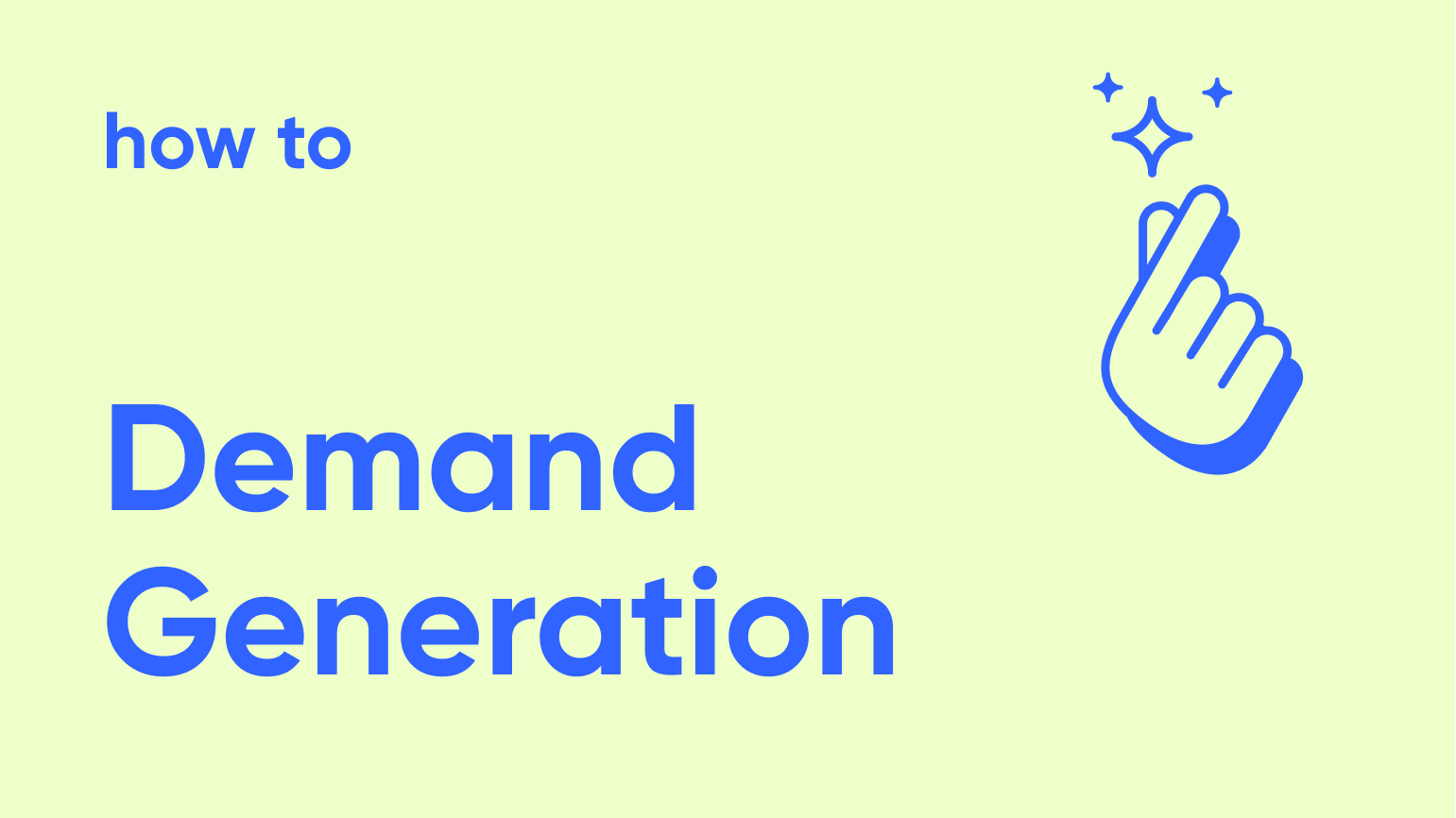
B2B businesses that aren't capable of generating demand in 2024 are destined to fail.
Without it, your sales team is left twiddling their thumbs, your revenue flatlines, and your growth grinds to a halt. The biggest fear of any business.
But what exactly is demand generation? How does it differ from lead generation? And most importantly, how can you create a demand generation strategy that actually works in 2025?
In this guide, we'll answer all those questions and more. You'll learn about:
- The key components of a successful demand gen strategy
- The latest tactics and channels you need to be using
- Real-world examples from brands who are crushing it
- A step-by-step process for creating your own demand gen plan
So if you're ready to take your B2B marketing to the next level, let's dive in.
What is Demand Generation?
Demand generation is the process of creating awareness and interest in your company's products or services to generate leads and drive sales.
It involves using various marketing strategies to attract potential customers and guide them through the sales funnel.
Examples of Demand Generation
Demand generation encompasses a wide range of marketing activities designed to capture the attention of potential customers and nurture them through the buying process. Some common examples include:
Content Marketing
Content marketing involves creating and sharing valuable, relevant content to attract and retain a clearly defined audience. This can include blog posts, ebooks, whitepapers, or case studies to name a few.
The goal is to educate potential customers about their challenges and how the company's products or services can help solve them. According to a study by the Content Marketing Institute, 70% of B2B marketers use content marketing to generate leads and drive sales.
Webinars and Events
B2B marketers rank webinars as the #2 best-performing content format — you would be missing out if you decide to not to invest in them.
Hosting webinars or events, either online or in-person, can be an effective way to generate demand and establish thought leadership. These events provide an opportunity to share knowledge, showcase products or services, and engage with potential customers in a more interactive setting.
For instance, a company might host a webinar on the latest trends in digital marketing, featuring industry experts and showcasing its own solutions — helping it position itself as a market-leader.
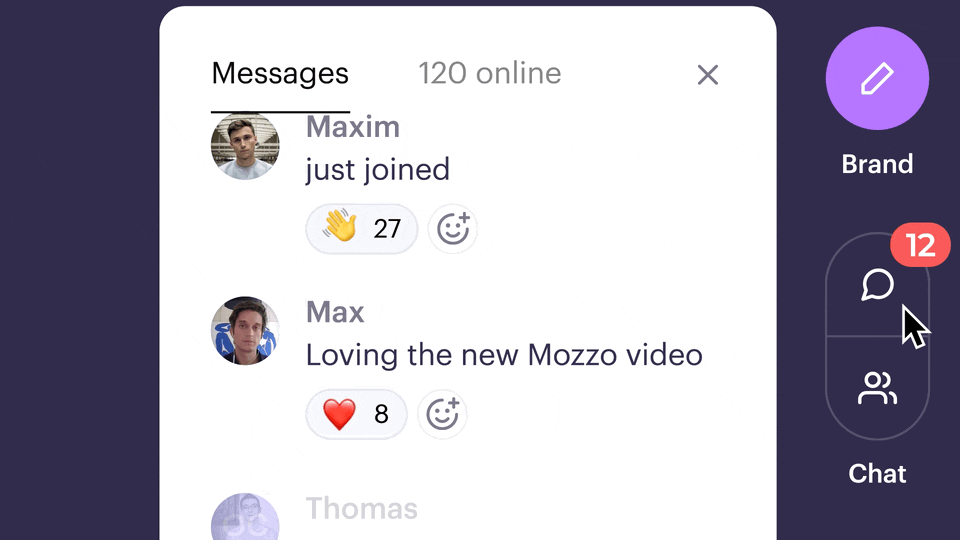
Search Engine Optimization (SEO)
SEO is the practice of optimizing a website and its content to rank higher in search engine results pages (SERPs). By improving visibility in search engines like Google, companies can attract more qualified traffic to their website. Tactics include keyword research, on-page optimization, link building, and technical SEO.
Marketers can leverage AI to boost their SEO strategies and publish much more content — transforming them from creators to editors.
Paid Advertising
Paid advertising, such as Google Ads and social media ads, allows companies to reach a targeted audience quickly. These ads can be tailored to specific demographics, interests, and behaviors, ensuring the right people see the message.
Retargeting ads can also be used to re-engage visitors who have previously interacted with the company's website.
Types of Demand Generation Strategies
While there are many ways to approach demand generation, most strategies fall into one of three categories: inbound marketing, outbound marketing, or account-based marketing (ABM).
Inbound Marketing
Inbound marketing focuses on attracting customers through valuable content and experiences. The goal is to draw potential customers to the company's website and nurture them with relevant information until they are ready to make a purchase.
Inbound tactics include SEO, content marketing, and social media marketing. According to a HubSpot study from 2021, inbound marketing generates 54% more leads than traditional outbound marketing — but this number is set to increase even more in the future.
Outbound Marketing
Outbound marketing involves reaching out to potential customers directly, rather than waiting for them to find the company. This can include tactics like email marketing, cold calling, direct mail, and trade shows.
While outbound marketing can be effective, it often requires more resources and may have a lower ROI than inbound strategies.
Account-Based Marketing (ABM)
ABM is a targeted approach that focuses on specific high-value accounts — you could consider it to be a mix of inbound and outbound.
Instead of casting a wide net, ABM personalizes marketing and sales efforts to each account, treating them as individual markets. This requires close alignment between marketing and sales teams to identify key accounts, develop customized content, and engage decision-makers. More on aligning sales and marketing later.
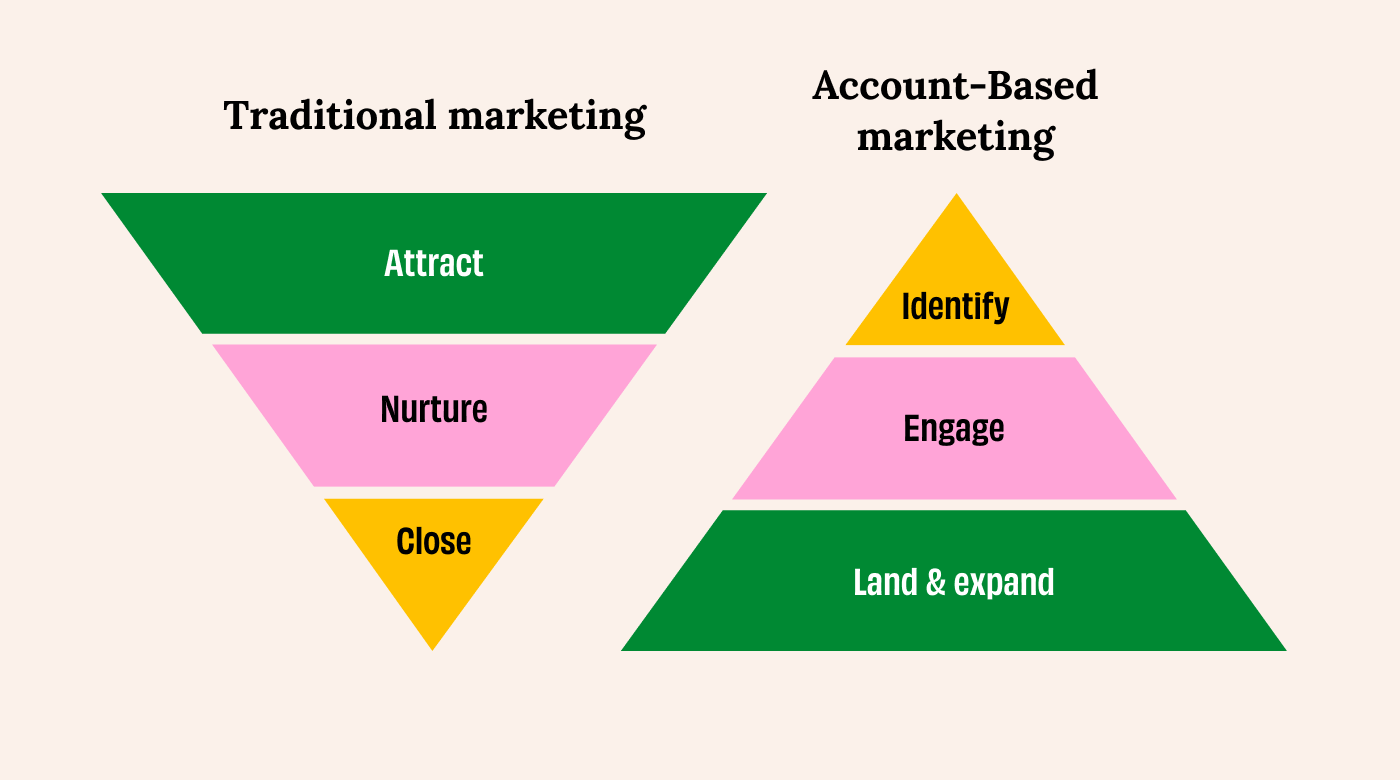
The Demand Generation Process
Demand generation is not a one-time event, but rather an ongoing process that guides potential customers through the sales funnel.
While the specific steps may vary depending on the company and industry, a typical demand generation process includes:
- Awareness: Attracting potential customers through content, advertising, and other outreach efforts.
- Interest: Engaging prospects with relevant information and nurturing their interest in the company's products or services.
- Consideration: Providing more detailed information, such as case studies and product demos, to help prospects evaluate their options.
- Intent: Identifying prospects who are showing strong buying signals and are ready to make a purchase.
- Evaluation: Assisting prospects in their final decision-making process and addressing any remaining concerns or objections.
- Purchase: Guiding prospects through the buying process and ensuring a smooth transition to customer success.
By understanding the demand generation process and implementing effective strategies at each stage, companies can successfully attract, engage, and convert potential customers into loyal clients.

Generate Demand with Webinars
Start for free with up to 30 registrants. No credit card needed.
Start for freeBenefits of Demand Generation
Demand generation offers several key advantages for B2B companies looking to grow their business. By implementing effective demand generation strategies, you can increase brand awareness, improve lead quality, and get improved sales and revenue.
Let's dive into these 1 by 1.
Increased Brand Awareness
One of the primary benefits of demand generation is its ability to help potential customers discover your company and its offerings. By creating valuable content and promoting it through various channels, you can reach a wider audience and attract more attention to your brand.
Demand generation also helps build trust and credibility in your industry. When you consistently provide high-quality, informative content that addresses your target audience's pain points and challenges, you position your company as a thought leader and trusted resource. For example, inviting well-known industry influencers as guest speakers to your webinar will help position you as an expert in the industry. This can lead to increased brand loyalty and a stronger reputation in your market.
According to a study by the Content Marketing Institute, companies that consistently create valuable content see a 54% increase in brand awareness compared to those that don't.
Higher Quality Leads
Another significant benefit of demand generation is its ability to attract leads who are more likely to convert into customers — in essence tightening your funnel. By targeting your content and messaging to specific buyer personas and stages of the buyer's journey, you can ensure that the leads you generate are a good fit for your products or services.
Demand generation also helps nurture leads with targeted content and messaging. By providing relevant information and resources at each stage of the buyer's journey, you can guide leads closer to a purchase decision and increase the likelihood of conversion.
Targeted Content for Each Stage of the Buyer's Journey
To maximize the impact of your demand generation efforts, it's essential to create targeted content for each stage of the buyer's journey:
- Awareness Stage: Focus on educational content that addresses your target audience's pain points and challenges, such as blog posts, infographics, and social media posts.
- Consideration Stage: Provide more in-depth resources that help leads evaluate their options, such as eBooks, whitepapers, and webinars.
- Decision Stage: Offer content that demonstrates the value of your products or services and helps leads make a purchase decision, such as case studies, product demos, and free trials.
Improved Sales and Revenue
Ultimately, the goal of demand generation is to drive more qualified leads into the sales funnel and increase conversion rates and customer lifetime value. By attracting higher quality leads and nurturing them with targeted content, you can improve the efficiency and effectiveness of your sales process.
Demand generation also helps align your marketing and sales teams around a common goal. By working together to create and promote content that resonates with your target audience, you can ensure that your marketing efforts are driving real business results.
For example, a case study by HubSpot found that companies that implemented a demand generation strategy saw a 30% increase in qualified leads and a 20% increase in revenue year-over-year.
By focusing on these key benefits of demand generation - increased brand awareness, higher quality leads, and improved sales and revenue - B2B companies can create a strong foundation for long-term growth and success in their market.
How Does Demand Generation Work?
Demand generation is a multi-stage process that attracts, engages, and converts potential customers.
The Demand Generation Funnel
Demand generation works by guiding potential customers through a journey, which typically consists of four main stages:
- Awareness: In this stage, the goal is to attract potential customers and make them aware of your brand, products, or services. This is often achieved through content marketing, search engine optimization (SEO), and paid advertising.
By creating valuable and informative content that addresses the pain points and interests of your target audience, you can increase your visibility and attract more traffic to your website. - Engagement: Once you have attracted potential customers, the next step is to engage them and nurture their interest in your offerings. This is where targeted content and messaging come into play.
By providing relevant and personalized content, such as email campaigns, webinars, and case studies, you can build trust and establish your brand as a thought leader in your industry.
Nurturing Leads with Email Campaigns
Email campaigns are a powerful tool for nurturing leads and keeping your brand top-of-mind. By segmenting your email list based on factors like job title, industry, and behavior, you can deliver targeted content that resonates with each group.
For example, you might send a series of educational emails to new subscribers, highlighting the benefits of your products or services and showcasing customer success stories.
- Conversion: The ultimate goal of demand generation is to convert leads into customers. This is where you guide leads to take a desired action, such as filling out a form, requesting a demo, or making a purchase.
By providing clear calls-to-action (CTAs) and optimizing your landing pages for conversion, you can increase the likelihood of turning leads into customers.
The Role of Landing Pages in Conversion
Landing pages play a crucial role in the conversion stage of demand generation. A well-designed landing page should have a clear and compelling headline, a strong value proposition, and a prominent CTA. It should also be optimized for mobile devices and load quickly to minimize bounce rates. According to WordStream, the top 10% of landing pages have conversion rates of 11.45% or higher, while the median conversion rate is around 2.35%. Unbounce reports a median conversion rate of 4.3% across all industries.
- Retention: Demand generation doesn’t stop once a lead becomes a customer. To encourage customer loyalty and advocacy, it’s important to continue engaging with customers and providing ongoing support. This can include personalized email campaigns, exclusive content, and loyalty programs.
Measuring the Success of Demand Generation
To ensure the effectiveness of your demand generation efforts, it’s essential to track and measure key performance indicators (KPIs). Some important KPIs to monitor include:
- Website traffic
- Lead generation
- Conversion rates
- Customer acquisition costs (CAC)
- Customer lifetime value (CLV)
By regularly analyzing these metrics, you can identify areas for improvement and optimize your demand generation strategies accordingly.
For a deeper dive into demand generation metrics, I recommend the book "The Demand Generation Handbook" by Carlos Hidalgo. This comprehensive guide covers everything from setting up a demand generation program to measuring its success and optimizing for better results.


Registration Pages that Convert in Minutes
Start for free with up to 50 registrants. No credit card needed.
Start for freeDemand Generation vs Lead Generation
Demand generation and lead generation still get mixed up quite a lot — yes, even in 2024!
But they're complimentary but different strategies.
The Relationship Between Demand Generation and Lead Generation
Demand generation and lead generation are two essential components of a successful marketing strategy. While they are closely related, they serve distinct purposes. Demand generation focuses on creating awareness and interest in a company's products or services, while lead generation (or sometimes called demand capture) is concerned with capturing contact information from potential customers who have shown interest.
Demand generation is a broader process that encompasses lead generation, as well as other marketing strategies designed to drive demand. It involves various tactics such as content marketing, social media marketing, and targeted advertising to attract potential customers and educate them about the company's offerings.
Once demand has been generated and potential customers are interested, lead generation comes into play. This process involves capturing contact information, such as email addresses or phone numbers, from individuals who have expressed interest in the company's products or services. This information is then used to nurture leads and guide them through the sales funnel.
The Three Approaches to Lead Generation
Once demand has been generated, companies can employ various lead generation strategies to capture contact information from interested individuals. The three main approaches to lead generation are:
- Inbound Lead Generation: This approach involves creating content and experiences that naturally attract potential customers to the company's website or landing pages. Examples include webinar lead generation, blog posts, social media content, and search engine optimization (SEO).
- Outbound Lead Generation: Outbound strategies involve proactively reaching out to potential customers through methods such as cold calling, email marketing, and direct mail campaigns.
- Paid Lead Generation: This approach involves using paid advertising channels, such as Google AdWords, LinkedIn Ads, or sponsored content, to drive targeted traffic to the company's website or landing pages.
Integrating Demand Generation and Lead Generation
To create a seamless marketing funnel, it's essential to integrate demand generation and lead generation strategies effectively. By aligning these two processes, companies can more efficiently guide potential customers through the buyer's journey, from initial awareness to purchase.
One way to achieve this integration is by ensuring that demand generation content and campaigns are designed with lead generation in mind. For example, blog posts or webinars should include clear calls-to-action (CTAs) that encourage readers or attendees to provide their contact information in exchange for additional resources or personalized follow-up.
Additionally, lead generation forms and landing pages should be optimized to capture relevant information while minimizing friction for the user. This can be achieved through techniques such as progressive profiling, which gradually collects more detailed information as the lead moves through the funnel, rather than asking for too much upfront.
By seamlessly integrating demand generation and lead generation strategies, companies can more effectively nurture leads and guide them towards becoming customers. This holistic approach to marketing helps ensure that resources are allocated efficiently and that the customer experience remains cohesive throughout the buyer's journey.


Turn Webinars into a Demand Generation Strategy
Start for free up to 30 registrants. No credit card needed.
Start for freeKey Demand Generation Metrics to Track
Measure the effectiveness of your demand generation strategies with key metrics and focus on leads that engage with your marketing efforts and are ready for sales outreach.
Marketing Qualified Leads (MQLs)
MQLs are leads that have engaged with your marketing efforts and meet certain criteria, such as downloading a whitepaper, attending a webinar, or visiting specific pages on your website. Tracking MQLs helps you measure the effectiveness of your demand generation strategies and identify which channels and tactics are driving the most engagement.
To determine what qualifies as an MQL, work with your sales team to define the criteria that indicate a lead is ready to be passed along for further nurturing. This may include factors like job title, company size, industry, and specific actions taken on your website or with your content.
Measuring MQL Performance
To measure the performance of your MQLs, track metrics such as:
- Conversion rates from MQL to SQL
- Time to convert from MQL to SQL
- Engagement rates with marketing content
- Source channels driving the most MQLs
By analyzing these metrics, you can optimize your demand generation efforts to focus on the channels and tactics that are most effective at driving qualified leads. You can then double down on the channels that are generating not only the most MQLs but also those with the highest MQL to SQL conversion rates.
Sales Qualified Leads (SQLs)
SQLs are leads that have been vetted by the sales team and are deemed ready to enter the sales cycle. These leads have typically expressed a strong interest in your product or service and have met certain criteria that indicate they are a good fit for your offering.
Tracking SQLs is crucial for measuring the quality of the leads generated by your demand generation efforts. A high number of SQLs indicates that your marketing and sales teams are aligned and that your demand generation strategies are effectively targeting the right audience.
Measuring SQL Performance
To measure the performance of your SQLs, track metrics such as:
- Conversion rates from SQL to customer
- Average deal size of closed won SQLs
- Sales cycle length for SQLs
- Engagement rates with sales content and outreach
By analyzing these metrics, you can identify areas for improvement in your sales process and ensure that your demand generation efforts are driving high-quality leads that are likely to convert into customers.
Customer Acquisition Cost (CAC)
CAC is the average cost of acquiring a new customer, including all marketing and sales expenses. Measuring CAC is essential for evaluating the ROI of your demand generation investments and ensuring that you are acquiring customers at a sustainable cost.
To calculate CAC, divide your total marketing and sales expenses by the number of new customers acquired over a given period. For example, if you spent $100,000 on marketing and sales in a quarter and acquired 50 new customers, your CAC would be $2,000.
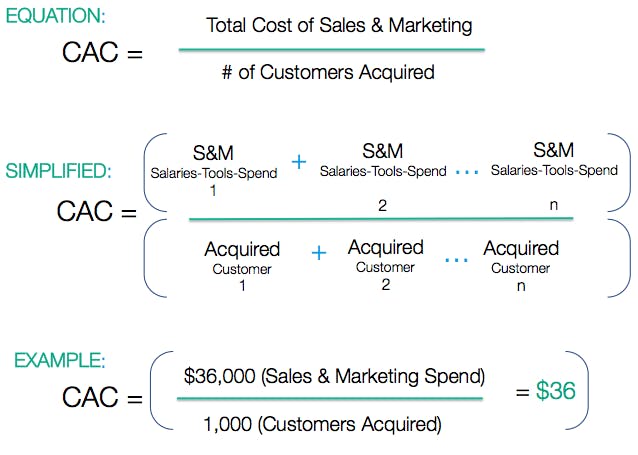
Benchmarking CAC
To determine if your CAC is healthy, benchmark it against industry standards and your own historical data. According to a study by Hubspot, the average CAC across industries is approximately $200, but this varies widely depending on the sector and business model.
Aim to keep your CAC lower than the lifetime value (LTV) of your customers to ensure profitability. Monitor trends in your CAC over time to identify any significant increases that may indicate a need to optimize your demand generation strategies.
Lead-to-Customer Conversion Rate
The lead-to-customer conversion rate measures the percentage of leads that ultimately become paying customers. This metric provides insight into the effectiveness of your entire demand generation funnel, from initial awareness to closing the sale.
To calculate your lead-to-customer conversion rate, divide the number of new customers acquired by the total number of leads generated over a given period. For example, if you generated 1,000 leads in a quarter and 50 of them became customers, your conversion rate would be 5%.
Optimizing Lead-to-Customer Conversion Rates
To improve your lead-to-customer conversion rate:
- Ensure that your marketing and sales teams are aligned on lead qualification criteria
- Provide targeted, relevant content to nurture leads through the funnel
- Optimize your sales process to address common objections and streamline the buying process
- Analyze drop-off points in your funnel to identify areas for improvement
Marketing ROI
Marketing ROI measures the return on investment of your demand generation efforts by comparing the revenue generated to the costs incurred. Tracking marketing ROI helps you justify your demand generation budget and identify the most effective strategies for driving revenue growth.
To calculate marketing ROI, use the formula:
(Revenue Generated - Marketing Costs) / Marketing Costs x 100.
For example, if your demand generation efforts generated $500,000 in revenue and cost $100,000, your marketing ROI would be 400%.
Maximizing Marketing ROI
To maximize your marketing ROI:
- Focus on the low hanging fruit: high-impact, low-cost strategies like content marketing and email nurturing
- Continuously test and optimize your campaigns based on performance data
- Invest in marketing attribution to accurately track the revenue contribution of each channel and campaign
- Align your demand generation efforts with your overall business goals and revenue targets
By tracking these key demand generation metrics and continuously optimizing your strategies based on the insights gained, you can build a powerful engine for driving sustainable business growth.
Demand Generation Best Practices
Define Your Target Audience
Any successful demand generation strategy starts with identifying your ideal customer profile (ICP) and developing buyer personas. Your ICP should include demographics, firmographics, and psychographics that define your perfect customer. Buyer personas are fictional representations of your ideal customers, including their goals, challenges, and decision-making processes.
By understanding your target audience, you can tailor your demand generation strategies to their specific needs and preferences. This ensures that your messaging resonates with them and increases the likelihood of conversion.
Create Valuable Content
Content is the backbone of your demand generation efforts. Develop a content strategy that addresses your target audience's pain points, interests, and questions at each stage of the buyer's journey.
Make sure your content is engaging and captures your audience's attention — nothing is worse than putting a lot of effort into a content piece for your target audience to not care about it.
To maximize the impact of your content, optimize it for search engines (SEO) and social media sharing. Research relevant keywords and incorporate them naturally into your content. Use engaging titles, meta descriptions, and images to attract clicks and shares.
Looking for ideas for webinars? Here are 17 B2B webinar ideas to drive growth.
Content Repurposing
Don't let your valuable content go to waste. Repurpose it into different formats to reach a wider audience and extend its lifespan. For example, turn a blog post series into an eBook, or create short video snippets from a webinar.
Another great example is webinar repurposing: Repurposing a webinar involves taking the content from a webinar and transforming it into different formats to extend its value and reach.
Not all of your audience will attend your live webinar. Different parts of your audience have different viewing preferences, you can repurpose your webinar into their preferred format. For example, 50% of webinar views are for on-demand formats.
This practice allows you to leverage the effort and resources spent on creating the webinar by making it accessible to a broader audience and through various channels.
Leverage Multiple Channels
To reach your target audience effectively, use a mix of inbound and outbound marketing tactics. Inbound tactics, such as SEO, content marketing, and social media, attract leads to your website. Outbound tactics, like email marketing, targeted advertising, and events, proactively reach out to potential customers.
Continuously test and optimize your demand generation campaigns across different channels. Analyze key metrics, such as click-through rates, conversion rates, and cost per lead, to identify what works best for your audience and adjust your strategies accordingly.
Align Marketing and Sales
Demand generation is most effective when marketing and sales teams work together seamlessly. Ensure that both teams have a shared understanding of the target audience, buyer's journey, and lead qualification criteria.
Implement lead scoring to prioritize and route leads effectively. Lead scoring assigns points to leads based on their demographic information and engagement with your brand. This helps sales teams focus on the most promising leads and increases the chances of conversion.
Sales Enablement
Provide your sales team with the resources and tools they need to succeed. This can include sales scripts, case studies, product demos, and competitive intelligence. Regular training and feedback sessions can also help align marketing and sales efforts.
Measure and Optimize Performance
To continually improve your demand generation efforts, regularly measure and analyze key performance indicators (KPIs). This can include website traffic, lead generation, conversion rates, and revenue attribution.
Use marketing automation and analytics tools to track the performance of your campaigns across different channels. Identify what's working well and what needs improvement, and make data-driven decisions to optimize your strategies.
Real-World Examples of Successful Demand Generation ROI
Salesforce: Maximizing Demand Generation ROI through Data Analytics
Salesforce's data analytics capabilities can greatly enhance demand generation ROI. By using data to analyze customer behavior and preferences, businesses can identify the most effective marketing campaigns and channels to focus on.
For example, data analytics can reveal which marketing touchpoints have the highest conversion rates, allowing companies to allocate their resources more efficiently.
Additionally, data can help identify trends and patterns that can inform future marketing strategies and customer targeting. By leveraging Salesforce's data analytics tools, businesses can optimize their demand generation efforts and achieve higher ROI.
Rally: Creating Demand for User Research through Webinars
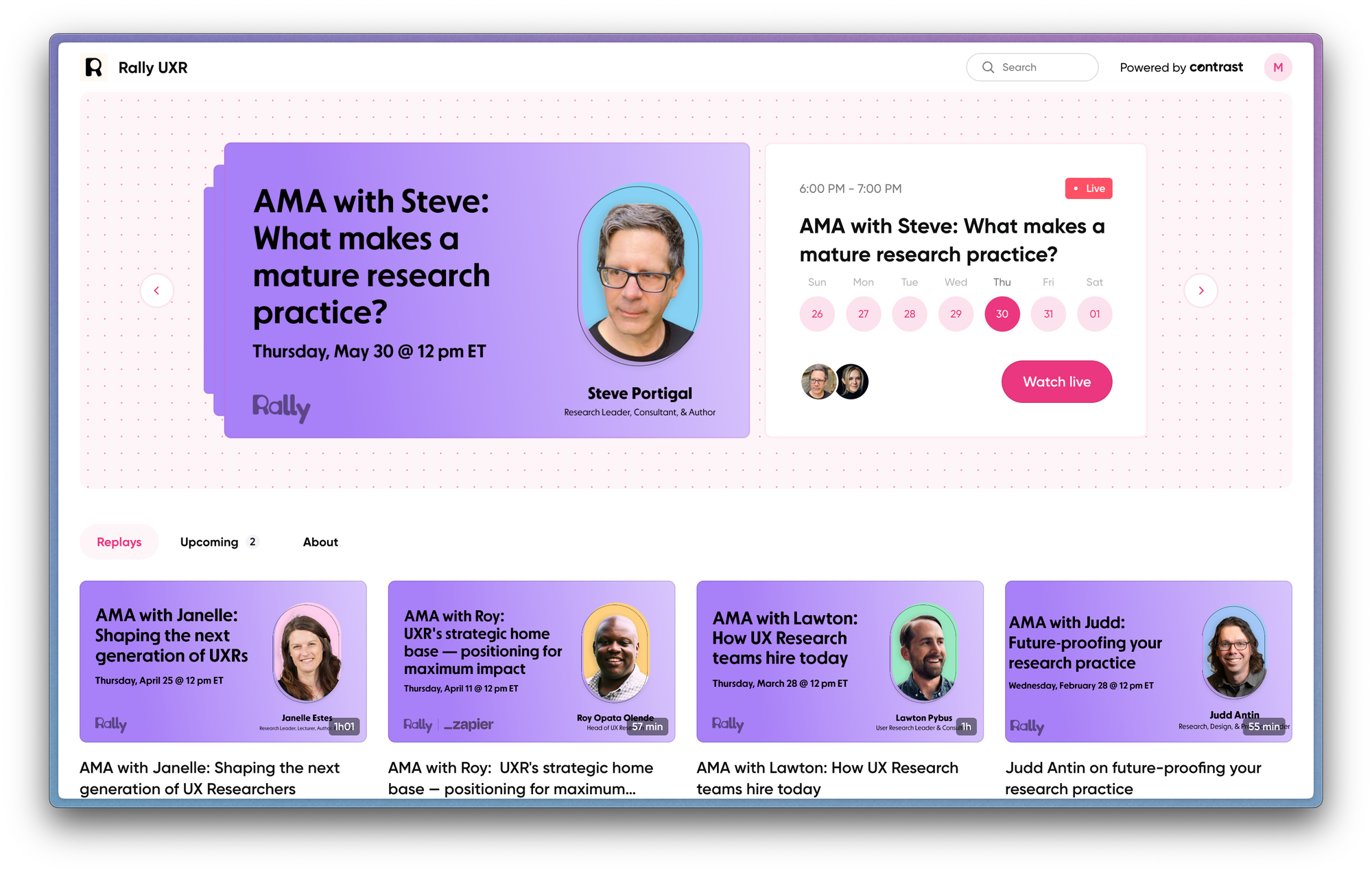
Rally uses Contrast to run monthly webinars — creating a steady stream of leads while also positioning them as the leader in the user research market.
These webinars generate a lot of data in their CRM that they can use to market to and follow up with people who register to their webinars. Leveraging engagement data to prioritise leads also makes this strategy much more efficient.
airfocus: Generating Demand through a Webinar-based Content Strategy
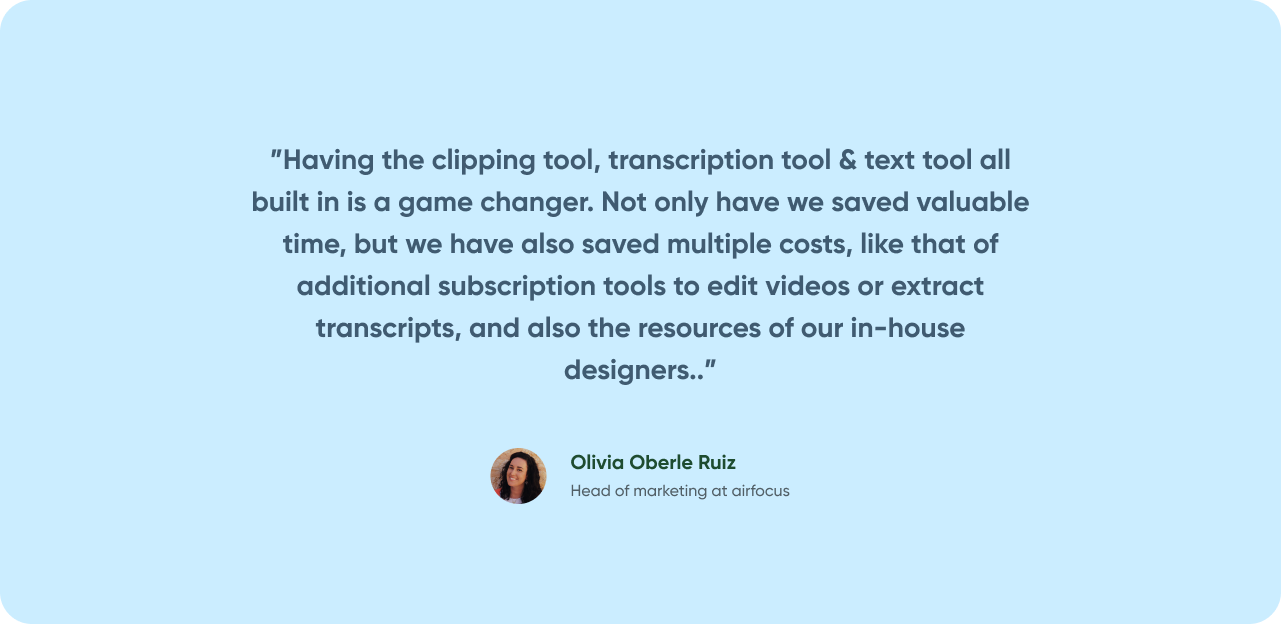
airfocus is a company that develops software for product managers. Their webinars are aimed at lead generation and thought leadership, offering valuable content and insights for product managers — all fitting into a more global demand generation strategy.
One example of thought leadership content they create is the Top PM Voices webinar series. Here they dive into the ins - and outs of product management.
They treat webinars like a marketing campaign, with extensive distribution through ads, social media, and by engaging their community.
Since Repurpose Ai launched, Contrast went from just being a webinar tool for airfocus, to becoming a content machine.

Generate Demand with Webinars
Start for free with up to 30 registrants. No credit card needed.
Start for freeKey Takeaways
Companies need to ensure they are getting the most out of their demand generation efforts. In order to do so, it is crucial to measure and optimize the results. This can be achieved by defining clear goals, establishing key performance indicators, and regularly tracking and analyzing the data. By understanding which marketing channels and tactics are generating the most qualified leads and conversions, businesses can allocate their resources effectively and refine their strategies.
Additionally, optimizing demand generation ROI involves constant testing, adjusting, and experimenting with different elements such as messaging, targeting, and creative content. By implementing these measurement and optimization techniques, companies can enhance their demand generation efforts and achieve better return on investment.
What is Demand Generation ROI?
Demand generation ROI refers to the measurement of the return on investment for the efforts put into generating demand for a product or service. It helps businesses gauge the effectiveness of their marketing campaigns and evaluate the value generated from their lead generation activities. By analyzing various metrics such as customer acquisition costs, conversion rates, and revenue generated, companies can determine the impact and efficiency of their demand generation strategies.
Key Metrics for Measuring Demand Generation ROI
Lead Conversion Rate
Lead conversion rate measures the efficiency of your demand generation efforts in turning leads into paying customers. It provides valuable insights into the effectiveness of your marketing strategies and helps determine the return on investment.
Cost Per Lead (CPL)
Cost per lead (CPL) tells you how much it costs to acquire one new lead. You can track the CPL for a specific campaign, time period, or marketing channel. Regular CPL calculations can help you decide if your marketing budget is being well spent.
Cost Per Acquisition (CPA)
Cost per acquisition (CPA) tells you how much it costs to acquire one new customer. CPA is similar to CPL, but instead of dividing by the number of leads generated, you divide by the number of new customers acquired.
Customer Lifetime Value (CLV)
Customer lifetime value (CLV) represents the amount you can expect a customer to spend on your business during their lifetime. In order for a marketing investment to be worthwhile, your CLV must be higher than your CPA.
Return on Investment (ROI)
Return on investment (ROI) is a percentage that offers a big-picture assessment of how cost-effective your demand generation efforts have been. Calculating ROI is more complicated than other metrics because the exact formula will vary based on your goals and marketing investments.
Marketing Sourced Net-New Revenue
Marketing sourced net-new revenue means all new sources of revenue sourced by a marketing channel. This report shows what impact marketing is having on the business’s bottom line. It includes the total amount of revenue generated by all marketing activities.
Contribution to Total Net New Revenue
Contribution to total net new revenue is the split of new revenue between sales, marketing, and channel partners. This metric helps businesses understand how each department contributes to overall revenue growth.
Qualified Pipeline Generated
Qualified pipeline generated is not the same as marketing qualified leads (MQLs) or sales qualified leads (SQLs). It measures the quality of leads in the pipeline and their potential to convert into customers.
Engagement Metrics
Engagement metrics are crucial for demand gen as they provide insight into how interactively audiences connect with content. These metrics include time on page, pages per session, and social shares. They indicate whether your demand gen content captures interest and encourages further interaction.
Conversion Rates
Conversion rates stand as a pivotal success indicator. They reveal how well your demand generation funnel turns prospects into leads, and leads into customers. High conversion rates often mean your messaging resonates with your audience, indicating successful demand gen strategies.
Vanity vs Actionable Metrics
Not all metrics offer equal value. Vanity metrics may look impressive but don’t directly contribute to demand generation funnel goals or enhance a demand gen strategy. Actionable metrics, on the other hand, drive strategic decisions. They relate closely to revenue and growth objectives.
Strategic Decision Making
Metrics guide key business decisions. By analyzing demand gen metrics within their generation funnel, businesses can identify what works and what doesn’t in their marketing approach. This is strategic decision-making in action.
A/B Testing
A/B testing is a crucial tool for refining demand gen strategies. By testing different elements such as messaging, targeting, and creative content, businesses can identify what resonates best with their audience and optimize their campaigns accordingly.
Cross-Collaboration
Cross-collaboration for product teams has helped the likes of Nokia, Hotjar, and Apple succeed. When you build a cross-collaboration culture, you empower employees to work together to solve complicated problems and find diverse solutions. Share your data with those that will be able to read, act, and input on it. Whether it’s for their own goals or to help you with your demand generation goals, your demand generation metrics reports will be more powerful in the hands of other talented team members.
Consider: Take this a step further and use these teams’ data to inform your demand generation reporting methods. Perhaps they’re already watching a metric you need to track—or have a system that can do it for you. What does your data tell you? It’s so crucial that you conclude with a hypothesis from your data sets. From there, you either need to dive deeper into the numbers to confirm your hypothesis or adjust your strategies accordingly.
Continuously Refine Marketing Strategies
Continuously refining marketing strategies is vital for maximizing demand generation ROI. By regularly evaluating and analyzing the performance of marketing campaigns, businesses can identify what works and what doesn't, allowing them to make informed decisions based on data-driven insights.
For example, conducting A/B testing on different ad creatives or messaging can reveal which approach resonates better with the target audience, leading to optimized conversions and higher returns.
Additionally, closely monitoring industry trends and consumer behavior helps businesses stay ahead of the competition and adapt their strategies accordingly. In a rapidly changing market, the ability to constantly refine and optimize marketing efforts is crucial for success.
Sustainable Business Growth with Demand Generation
Demand generation is a powerful strategy to create awareness, drive interest, and ultimately increase sales for your business. By implementing a well-crafted demand generation plan, you can attract high-quality leads, nurture them through the sales funnel, and boost your revenue.
To succeed with demand generation, focus on understanding your target audience, creating valuable content, and leveraging multiple channels to reach potential customers. Continuously monitor and optimize your campaigns to ensure the best possible results.
By investing in demand generation, you're setting your business up for long-term, sustainable growth. Don't miss out on this opportunity to take your company to the next level.
Don't forget to use webinars in your demand generation strategy — and make sure to check out Contrast.


Registration Pages that Convert in Minutes
Start for free with up to 30 registrants. No credit card needed.
Start for free